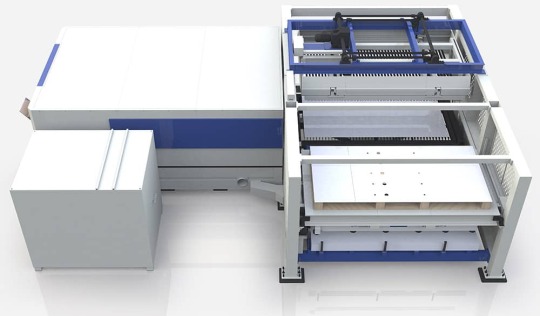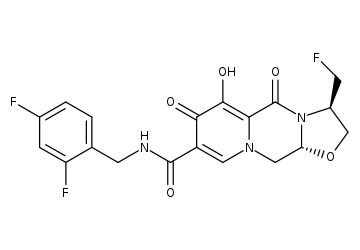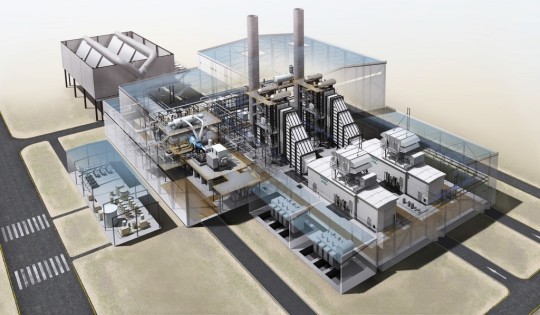Text
Bond Breaker Market Is Estimated To Witness High Growth Owing To Increasing Construction Activities

The global Bond Breaker Market is estimated to be valued at US$ 1.29 billion in 2023 and is expected to exhibit a CAGR of 7.5% over the forecast period (2023-2030), as highlighted in a new report published by Coherent Market Insights.
Market Overview:
Bond breakers are materials used in construction to prevent adhesion between surfaces and promote easy separation. They are commonly used in concrete construction to prevent bonding between freshly poured concrete and adjoining surfaces such as formwork, expansion joints, and reinforcement bars. Bond breakers provide advantages such as ease of removal, reducing the risk of damage to the concrete surface, and ensuring proper expansion and contraction of concrete structures. The need for bond breakers is associated with the increasing construction activities globally, especially in regions such as Asia Pacific and the Middle East.
Market Key Trends:
A key trend in the bond breaker market is the growing adoption of sustainable and eco-friendly products. With the increasing focus on environmental conservation, construction industry players are shifting towards greener alternatives. Eco-friendly bond breakers not only offer the required functionality but also contribute to reducing the carbon footprint of construction projects. Manufacturers are developing bio-based bond breakers that are free from harmful chemicals and provide effective bonding prevention. This trend is driven by regulatory policies promoting sustainable construction practices and the growing awareness among construction professionals about the environmental impact of their projects. As a result, the demand for sustainable bond breakers is expected to witness significant growth over the forecast period.
PEST Analysis:
Political: There are no major political factors that directly impact the bond breaker market. However, government regulations concerning construction safety and environmental impact may indirectly influence the market.
Economic: The bond breaker market is expected to witness high growth during the forecast period, primarily due to the booming construction industry globally. Increasing urbanization, infrastructural development projects, and rising commercial construction activities are driving the demand for bond breakers.
Social: The growing awareness about the benefits of using bond breakers in construction projects is a major social factor affecting the market. Bond breakers help in preventing the adhesion of freshly poured concrete to the adjacent surfaces, resulting in better quality and efficiency in construction.
Technological: The technological advancements in the manufacturing of bond breakers have significantly improved their performance and durability. The development of eco-friendly and biodegradable bond breakers is also a noteworthy technological trend in the market.
Key Takeaways:
Market size: The Global Bond Breaker Market Size is expected to witness high growth, exhibiting a CAGR of 7.5% over the forecast period. This growth can be attributed to the increasing demand for bond breakers in the construction industry, especially in developing regions where infrastructural development is at its peak.
Regional analysis: Asia Pacific is projected to be the fastest-growing and dominating region in the bond breaker market. The rapid urbanization, increasing population, and infrastructure development initiatives in countries like China and India are driving the demand for bond breakers in the region.
Key players: The key players operating in the bond breaker market include Sika AG, BASF SE, Fosroc International Limited, Saint-Gobain Weber, The Euclid Chemical Company, Dayton Superior Corporation, WR Meadows, Specified Technologies Inc, TCC Materials, and EMSEAL Joint Systems Ltd. These companies are actively focusing on product innovation, expanding their distribution network, and strategic collaborations to gain a competitive edge in the market.
#construction#infrastructural development#Bond Breaker Market#Bond Breaker Market Insights#Bond Breaker Market Outlook#Bond Breaker Market Forecast#Bond Breaker Market Value#Bond Breaker#Coherent Market Insights
0 notes
Text
Blister Packaging Market Is Estimated To Witness High Growth Owing To Increasing Demand for Pharmaceutical Packaging

The global Blister Packaging Market is estimated to be valued at US$ 15.2 billion in 2021 and is expected to exhibit a CAGR of 6.9% over the forecast period (2022-2030), as highlighted in a new report published by Coherent Market Insights.
Market Overview:
Blister packaging refers to a type of packaging that consists of pre-formed plastic trays or pockets and a lidding material. It is widely used in the pharmaceutical industry for packaging tablets, capsules, and other solid dosage forms. Blister packaging offers various advantages such as protection against contamination, tampering, and moisture. It also provides extended shelf life, easy transportation, and enhanced product visibility. The increasing demand for pharmaceutical packaging due to the rising global healthcare expenditure and the growing prevalence of chronic diseases is driving the growth of the blister packaging market.
Market Key Trends:
The key trend in the blister packaging market is the increasing adoption of sustainable packaging materials. With growing environmental concerns, pharmaceutical companies are shifting towards eco-friendly packaging solutions. They are opting for recyclable and biodegradable materials to reduce their carbon footprint. This trend has led to the development of innovative blister packaging materials such as biopolymers and bio-based plastics. These materials not only provide the necessary protection and functionality but also help in minimizing the environmental impact. The adoption of sustainable blister packaging materials is expected to drive the growth of the market in the coming years.
PEST Analysis:
Political: The political factors influencing the blister packaging market include government regulations and policies related to packaging materials, recycling, and waste management. For instance, governments around the world are increasingly implementing stricter regulations on plastic packaging to reduce environmental pollution and promote sustainable practices.
Economic: The economic factors impacting the blister packaging market are the overall economic growth, disposable income levels, and consumer purchasing power. As the global economy recovers from the impact of the COVID-19 pandemic, the demand for blister packaging is expected to increase, driven by the rising consumption of consumer goods and pharmaceutical products.
Social: Changing consumer preferences and demographics play a significant role in shaping the blister packaging market. The increasing focus on convenience, portability, and product visibility among consumers drives the demand for blister packaging. Additionally, the growing aging population and the rise in chronic diseases create a higher demand for pharmaceutical products, which in turn boosts the demand for blister packaging in the healthcare sector.
Technological: Technological advancements in blister packaging materials, designs, and machinery contribute to market growth. Innovative packaging materials that offer better barrier properties, such as aluminum foil and high-density polyethylene (HDPE), are gaining popularity. Furthermore, advancements in printing and labeling technologies enable attractive and informative packaging designs, enhancing the visual appeal of blister packs.
Key Takeaways:
The Global Blister Packaging Market Demand is expected to witness high growth, exhibiting a CAGR of 6.9% over the forecast period of 2022-2030. The market size for 2021 was valued at US$ 15.2 billion.
Regionally, Asia Pacific is projected to be the fastest-growing and dominating region in the blister packaging market. The region's rapid economic development, increasing population, and expanding pharmaceutical and consumer goods industries contribute to the high demand for blister packaging.
#blister packaging market#blister packaging market demand#blister packaging market forecast#blister packaging market analysis#blister packaging#packaging
0 notes
Text
Global Laser Automation Market Is Estimated To Witness High Growth Owing To Rising Demand for Precision and Efficiency

The global Laser Automation Market is estimated to be valued at US$ 6.48 billion in 2023 and is expected to exhibit a CAGR of 7% over the forecast period, as highlighted in a new report published by Coherent Market Insights. The market is driven by the increasing demand for precision and efficiency in various industries such as automotive, electronics, aerospace, and healthcare.
Market Overview:
Laser automation refers to the use of laser technology in various industrial processes, including cutting, welding, marking, engraving, and drilling. Laser automation offers several advantages such as high accuracy, faster processing speeds, improved quality, and reduced production costs. These advantages have led to the widespread adoption of laser automation systems across industries.
Market Key Trends:
One key trend in the global Laser Automation Market is the growing adoption of fiber lasers. Fiber lasers are gaining popularity due to their superior cutting and welding capabilities, high efficiency, and long operational life. They are widely used in automotive manufacturing, electronics, and healthcare industries. For instance, TRUMPF GmbH + Co. KG, one of the key players in the market, offers a range of fiber lasers for various applications, including marking, welding, and cutting.
PEST Analysis:
Political: Governments across the globe are focusing on promoting industrial automation to improve productivity and reduce labor costs. This is driving the demand for laser automation systems.
Economic: The economic growth of emerging economies such as China, India, and Brazil is boosting various industries such as automotive and electronics, thereby increasing the demand for laser automation systems.
Social: The growing awareness about the benefits of laser automation, such as improved productivity and enhanced product quality, is driving its adoption among industries and manufacturers.
Technological: Technological advancements in laser technology, such as the development of ultrafast lasers and beam delivery systems, are driving the growth of the laser automation market.
Key Takeaways:
The Global Laser Automation Market Demand is expected to witness high growth, exhibiting a CAGR of 7% over the forecast period. This growth can be attributed to the increasing demand for precision and efficiency in various industries, including automotive, electronics, aerospace, and healthcare. The market is driven by the adoption of fiber lasers, which offer superior cutting and welding capabilities, high efficiency, and long operational life.
In terms of regional analysis, Asia Pacific is expected to be the fastest growing and dominating region in the Laser Automation Market. This can be attributed to the rapid industrialization and economic growth in countries such as China and India. The presence of major manufacturers in the region, coupled with the increasing investments in automation technologies, is further driving the market growth.
Key players operating in the global Laser Automation Market include TRUMPF GmbH + Co. KG, Coherent, Inc., IPG Photonics Corporation, Han's Laser Technology Industry Group Co., Ltd., Rofin-Sinar Technologies Inc., Jenoptik AG, Amada Miyachi America, Inc., Newport Corporation, Prima Power, and Fanuc Corporation. These companies are focusing on product innovation and strategic partnerships to gain a competitive edge in the market.
0 notes
Text
Global Integrase Inhibitors Market Is Estimated To Witness High Growth Owing To Escalating HIV/AIDS Prevalence

The global Integrase Inhibitors Market is estimated to be valued at US$ 29.34 billion in 2023 and is expected to exhibit a CAGR of 3.9% over the forecast period of 2023 to 2030, as highlighted in a new report published by Coherent Market Insights.
Market Overview:
Integrase inhibitors are a class of antiretroviral drugs used for the treatment of HIV/AIDS. They work by blocking the action of the integrase enzyme, which is responsible for inserting the viral genetic material into the DNA of the host cell. This prevents the replication of the virus and helps in controlling the progression of HIV infection.
The need for effective anti-HIV drugs has become crucial due to the rising prevalence of HIV/AIDS worldwide. According to the World Health Organization (WHO), approximately 38 million people were living with HIV/AIDS in 2019. This high prevalence has led to increased demand for integrase inhibitors, as they offer several advantages over other antiretroviral drugs, such as improved efficacy, better tolerability, lower toxicity, and ease of administration.
Market Key Trends:
One key trend driving the growth of the global integrase inhibitors market is the development of novel and more potent drugs. Pharmaceutical companies are constantly investing in research and development activities to discover and develop new integrase inhibitors with improved therapeutic outcomes. For instance, Gilead Sciences recently received approval from the U.S. Food and Drug Administration (FDA) for a new integrase inhibitor called Biktarvy. This drug is a combination of three active ingredients and offers high efficacy with a low risk of drug resistance.
PEST Analysis:
Political: The political environment plays a crucial role in shaping the regulations and policies related to HIV/AIDS prevention and treatment. Governments across the globe are increasingly focusing on combating the HIV/AIDS epidemic by implementing awareness campaigns, providing access to affordable healthcare services, and ensuring the availability of antiretroviral drugs, including integrase inhibitors.
Economic: The economic factors influencing the integrase inhibitors market include healthcare expenditure, affordability, and reimbursement policies. The high cost of integrase inhibitors can pose a challenge in low-income countries, where access to these drugs is limited due to financial constraints. However, government initiatives and collaborations with pharmaceutical companies are aimed at reducing the cost of these drugs and making them more accessible to all.
Social: Social factors such as awareness, stigma, and healthcare infrastructure influence the adoption of integrase inhibitors. Increasing awareness about HIV/AIDS and the importance of early diagnosis and treatment is driving the demand for integrase inhibitors. Efforts are being made to reduce the stigma associated with HIV/AIDS, which can affect patients' willingness to seek treatment and adhere to medication regimens.
Technological: Technological advancements in drug delivery systems and diagnostics have improved the efficacy and accessibility of integrase inhibitors. The development of long-acting formulations and point-of-care testing methods has facilitated better disease management and monitoring. Furthermore, advancements in genetic engineering techniques have enabled the discovery and development of more potent integrase inhibitors.
Key Takeaways:
- The Global Integrase Inhibitors Market Size is expected to witness high growth, exhibiting a CAGR of 3.9% over the forecast period. This growth can be attributed to increasing HIV/AIDS prevalence globally and the demand for effective antiretroviral drugs.
- Regionally, North America is expected to dominate the market due to a well-established healthcare infrastructure, high healthcare expenditure, and favorable reimbursement policies.
0 notes
Text
Insulin Sensitizers Market Is Estimated To Witness High Growth Owing To Increasing Prevalence of Insulin Resistance

The global Insulin Sensitizers Market is estimated to be valued at US$ 15.09 billion in 2023 and is expected to exhibit a CAGR of 5.5% over the forecast period 2023-2030, as highlighted in a new report published by Coherent Market Insights.
Market Overview:
Insulin sensitizers are medications that help improve insulin sensitivity and reduce blood sugar levels in individuals suffering from insulin resistance. These drugs are primarily used in the treatment of type 2 diabetes and metabolic syndrome. Insulin resistance occurs when the body's cells become inefficient at using insulin, leading to high blood sugar levels. Insufficient insulin sensitivity can also result in other health complications such as obesity, hypertension, and cardiovascular diseases.
Insulin sensitizers play a crucial role in managing insulin resistance by enhancing the body's response to insulin and facilitating glucose uptake by the cells. These medications help regulate blood sugar levels, decrease the risk of diabetes-related complications, and improve overall metabolic health. The growing prevalence of insulin resistance, coupled with the rising global burden of diabetes, is driving the demand for insulin sensitizers.
Market Key Trends:
One key trend observed in the insulin sensitizers market is the increasing focus on combination therapies. Healthcare providers are increasingly prescribing combination therapies that include insulin sensitizers along with other diabetes medications to achieve optimal glycemic control. The combination approach allows for better blood glucose management, reduced side effects, and improved patient adherence to treatment regimens.
For example, a common combination therapy includes a sulfonylurea (such as glimepiride or glipizide) along with a thiazolidinedione (such as pioglitazone). The sulfonylurea stimulates insulin secretion from the pancreas, while the thiazolidinedione improves insulin sensitivity and reduces insulin resistance. This combination therapy offers a dual mechanism of action, resulting in better glycemic control in patients with type 2 diabetes.
PEST Analysis:
- Political: Government policies and regulations related to drug pricing and reimbursement can impact the insulin sensitizers market. Price controls or changes in reimbursement policies can affect the financial viability of manufacturers and influence market dynamics.
- Economic: The growing healthcare expenditure, increasing disposable income, and rising healthcare awareness are favorable economic factors that contribute to the growth of the insulin sensitizers market.
- Social: Lifestyle changes, sedentary behaviors, unhealthy dietary habits, and the high prevalence of obesity contribute to the rising incidence of insulin resistance and diabetes globally.
- Technological: Advancements in drug delivery systems, such as insulin pens and pumps, have improved patient convenience and adherence to insulin sensitizers.
Key Takeaways:
1: The Global Insulin Sensitizers Market Size is expected to witness high growth, exhibiting a CAGR of 5.5% over the forecast period. This growth is primarily driven by the increasing prevalence of insulin resistance and the rising global burden of diabetes. Insulin sensitizers play a crucial role in managing insulin resistance and improve overall metabolic health.
2: Regionally, North America is anticipated to be the fastest growing and dominating region in the insulin sensitizers market. The region's high prevalence of diabetes, well-established healthcare infrastructure, and favorable reimbursement policies contribute to its market dominance.
3: Key players operating in the global insulin sensitizers market include Eli Lilly and Company, Novo Nordisk, Sanofi, Merck & Co., Bristol Myers Squibb, AstraZeneca, Boehringer Ingelheim, Johnson & Johnson, and Takeda Pharmaceutical. These companies focus on product innovation, strategic collaborations, and geographic expansion to gain a competitive edge in the market.
#Insulin Sensitizers Market#Insulin Sensitizers Market Outlook#Insulin Sensitizers Market Insights#Insulin Sensitizers Market Overview#Insulin Sensitizers Market Forecast#pharmaceutical drugs#glycemic#metabolic disorders#antidiabetic drugs#monotherapy#coherent market insights
0 notes
Text
Global Homeopathic Dilutions Market Is Estimated To Witness High Growth Owing To Increasing Demand For Natural Remedies

The Global Homeopathic Dilutions Market is estimated to be valued at US$7.11 billion in 2023 and is expected to exhibit a CAGR of 18.5% over the forecast period 2023-2030, as highlighted in a new report published by Coherent Market Insights. Market Overview: Homeopathic dilutions refer to highly diluted substances used in homeopathic medicine. These dilutions are believed to have therapeutic effects and are widely used for treating various ailments. The market for homeopathic dilutions is growing rapidly due to the increasing demand for natural and holistic remedies. Homeopathy offers a safe and effective alternative to conventional medicine, which has led to a rise in its adoption globally.
Market Key Trends: One key trend driving the growth of the global Homeopathic Dilutions Market is the growing consumer preference for natural remedies. With increasing awareness about the potential side effects of conventional medicine, consumers are seeking alternative treatment options that are safe and have fewer side effects. Homeopathic dilutions, derived from natural substances, fulfill this requirement and are gaining popularity among health-conscious individuals. For example, Arnica montana, a homeopathic dilution made from the arnica plant, is commonly used to treat pain, bruising, and inflammation. This natural remedy has gained significant traction, thanks to its effectiveness and minimal side effects. As a result, the demand for homeopathic dilutions made from different natural substances is expected to increase during the forecast period.
PEST Analysis: - Political: The regulatory landscape for homeopathic products varies across different countries. While some countries have well-defined regulations and licensing requirements, others have more lenient regulations. It is important for manufacturers and suppliers to comply with the political environment of the market they operate in. - Economic: The homeopathic dilutions market is influenced by economic factors such as income levels, disposable income, and healthcare expenditure. Higher disposable income and increased healthcare spending are expected to drive market growth. - Social: There is a growing preference for natural and holistic remedies among consumers. The shift towards natural healthcare solutions is driven by factors such as increased awareness about the potential side effects of conventional medicine and the desire for a more personalized approach to healthcare. - Technological: Advancements in manufacturing technologies and processes have improved the quality and efficacy of homeopathic dilutions. These advancements have also enabled manufacturers to develop new formulations and customize treatments based on individual needs.
Key Takeaways: 1: The Global Homeopathic Dilutions Market Demand is expected to witness high growth, exhibiting a CAGR of 18.5% over the forecast period. This growth can be attributed to increasing consumer demand for natural remedies. As individuals become more aware of the potential side effects of conventional medicine, they are turning towards safer and holistic alternatives like homeopathy. 2: The Asia-Pacific region is expected to be the fastest-growing and dominating region in the Homeopathic Dilutions Market. This can be attributed to the rising population, increasing disposable income, and growing awareness about the benefits of homeopathy in countries like India and China. 3: Key players operating in the global Homeopathic Dilutions Market include Boiron, Heel, Schwabe Group, Dolisos, Nelsons, Weleda, SBL Homeopathy, Hahnemann Laboratories Inc., Reckeweg, Helios Homeopathy, Ainsworths, Pekana, WHP (Washington Homeopathic Products), Hyland's Homeopathic, and Hapé Homeopathic Pharmacy. These players focus on product innovation, strategic collaborations, and mergers & acquisitions to strengthen their market presence.
#Homeopathic Dilutions Market#Homeopathic Dilutions Market Insights#Homeopathic Dilutions Market Forecast#Homeopathic Dilutions Market Analysis#Homeopathic Dilutions Market Outlook#Homeopathic Dilutions#traditional medicines#natural remedies#health#holistic healing#Coherent Market Insights
0 notes
Text
Global Foldable Container House Market Is Estimated To Witness High Growth Owing To Increasing Demand for Sustainable and Portable Housing Solutions

The global Foldable Container House Market is estimated to be valued at US$ 8.5 billion in 2023 and is expected to exhibit a CAGR of 9.4% over the forecast period 2023 to 2030, as highlighted in a new report published by Coherent Market Insights.
Market Overview:
Foldable container houses are portable and adaptable housing solutions that are gaining significant traction in the construction industry. These houses are designed to be easily folded and transported, making them ideal for temporary or mobile housing needs. They can be quickly assembled and disassembled, making them suitable for disaster relief efforts, remote sites, and temporary housing solutions. The growing need for sustainable and eco-friendly housing options, coupled with the increasing demand for affordable housing, is expected to drive the market growth. Foldable container houses offer several advantages such as cost-effectiveness, quick installation, and reusability, which further contribute to their rising popularity in the market.
Market Key Trends:
One key trend in the foldable container house market is the integration of smart technologies. With the advent of Internet of Things (IoT) and artificial intelligence (AI), foldable container houses are being equipped with advanced features such as remote monitoring, automated systems, and energy-efficient solutions. These smart technologies enhance the functionality and comfort of these houses, making them more attractive to consumers. For example, some foldable container houses now come with smart home control systems, allowing users to manage lighting, temperature, security, and other aspects of their homes through their smartphones or voice commands.
PEST Analysis:
Political: The political factors influencing the foldable container house market include government regulations and policies related to housing and construction. Governments around the world are increasingly recognizing the need for affordable housing solutions and are implementing initiatives to promote sustainable and portable housing options.
Economic: The economic factors such as rising urbanization, population growth, and increasing disposable incomes are driving the demand for housing, including foldable container houses. These houses provide cost-effective and flexible housing solutions, appealing to a wide range of consumers.
Social: Social factors such as changing lifestyles and preferences for sustainable living are contributing to the growth of the foldable container house market. Consumers are becoming more conscious of their environmental impact and are seeking eco-friendly housing options that align with their values.
Technological: Technological advancements in materials, construction techniques, and smart technologies are revolutionizing the foldable container house market. Innovations in lightweight and durable materials, as well as advancements in automation and IoT, are enabling the development of more efficient and comfortable housing solutions.
Key Takeaways:
1: The Global Foldable Container House Market Growth is expected to witness high, exhibiting a CAGR of 9.4% over the forecast period. This growth can be attributed to the increasing demand for sustainable and portable housing solutions. The need for affordable housing options, coupled with the flexibility and cost-effectiveness of foldable container houses, is driving their adoption in the market.
2: In terms of regional analysis, Asia Pacific is expected to be the fastest-growing and dominating region in the foldable container house market. This can be attributed to rapid urbanization, population growth, and government initiatives promoting affordable housing in countries like China and India.
#Foldable Container House Market Insights#Foldable Container House Market Growth#Foldable Container House Market Analysis#Foldable Container House Market Outlook#Foldable Container House Market Forecast#Foldable Container House#transportation#Foldable container#disaster relief#Coherent Market Insights
0 notes
Text
Global Ethernet Card Market Is Estimated To Witness High Growth Owing To Increasing Demand for High-Speed Data Transfer

The global Ethernet Card Market is estimated to be valued at US$ 6.25 billion in 2023 and is expected to exhibit a CAGR of 9% over the forecast period 2023-2030, as highlighted in a new report published by Coherent Market Insights.
Market Overview:
Ethernet cards are network interface cards that enable the connection of devices to a local area network (LAN). They facilitate high-speed data transfer and are widely used in various industries such as IT & telecommunications, healthcare, retail, and manufacturing. The advantages of using Ethernet cards include improved network performance, scalability, and cost efficiency. With the increasing demand for high-speed data transfer and the growing adoption of cloud computing and IoT technologies, the market for Ethernet cards is expected to witness significant growth.
Market Key Trends:
One key trend driving the growth of the Ethernet Card Market is the increasing demand for high-speed connectivity. As organizations rely more on digital infrastructure and require faster data transfer rates, the need for high-performance Ethernet cards has risen. For example, with the introduction of 5G technology and the increasing popularity of video streaming services, there is a growing demand for Ethernet cards that can support higher bandwidths to provide seamless connectivity. This trend is expected to drive the market growth of Ethernet cards in the coming years.
PEST Analysis:
- Political: Government policies and regulations on data security and privacy can impact the adoption of Ethernet cards, especially in industries such as healthcare and finance.
- Economic: The growing digital economy and increasing investments in IT infrastructure are driving the demand for Ethernet cards.
- Social: The proliferation of smartphones and other connected devices has led to an increase in data consumption, necessitating faster network speeds.
- Technological: Advancements in Ethernet card technology, such as the development of higher bandwidth standards like 10 Gigabit Ethernet (GbE) and 25 GbE, are driving market growth.
Key Takeaways:
- The Global Ethernet Card Market Demand is expected to witness high growth, exhibiting a CAGR of 9% over the forecast period, due to increasing demand for high-speed data transfer. For example, the adoption of Ethernet cards in data centers and cloud computing environments is increasing to support the growing demand for storage and processing capabilities.
- North America is expected to be the fastest-growing and dominating region in the Ethernet Card Market, driven by the presence of major players and the rapid adoption of advanced technologies in the region.
- Key players operating in the global Ethernet Card Market include Intel Corporation, Broadcom Inc., Mellanox Technologies (now part of NVIDIA), Cisco Systems Inc., Juniper Networks Inc., Hewlett Packard Enterprise (HPE), Dell Technologies Inc., Huawei Technologies Co. Ltd., Arista Networks Inc., Extreme Networks Inc., Juniper Networks Inc., Marvell Technology Group Ltd., Fujitsu Limited, NEC Corporation, and Microchip Technology Inc. These players are focusing on product innovation and strategic partnerships to gain a competitive edge in the market.
In conclusion, the global Ethernet Card Market is poised for significant growth due to the increasing demand for high-speed data transfer and the adoption of advanced technologies. With technological advancements and the expansion of digital infrastructure, Ethernet cards are expected to play a crucial role in ensuring seamless connectivity and network performance across various industries.
#Ethernet Cards Market#Ethernet Cards Market Outlook#Ethernet Cards Market Overview#Ethernet Cards Market Demand#Ethernet cards#network interface cards#Ethernet networks#data transfer#Coherent Market Insights
0 notes
Text
Biodegradable Packaging Market Is Estimated To Witness High Growth Owing To Increasing Demand for Sustainable Packaging Solutions

The Global Biodegradable Packaging Market is estimated to be valued at US$ 10,101.7 Mn in 2021 and is expected to exhibit a CAGR of 20.8% over the forecast period 2021-2028, as highlighted in a new report published by Coherent Market Insights.
Market Overview:
Biodegradable packaging refers to packaging materials that can be broken down naturally by the environment, reducing waste and minimizing the impact on the ecosystem. These packaging solutions are gaining significant traction due to the growing consumer demand for sustainable and eco-friendly products. Biodegradable packaging offers several advantages, such as the reduction of carbon footprint, elimination of harmful plastics, and the ability to decompose without leaving harmful residues. With increasing awareness about environmental conservation and government regulations promoting sustainable practices, there is a growing need for biodegradable packaging solutions across various industries.
Market Key Trends:
One key trend in the biodegradable packaging market is the growing adoption of bioplastics as a sustainable alternative to conventional plastics. Bioplastics are derived from renewable sources such as corn, sugarcane, potatoes, and algae. They are biodegradable and have a lower carbon footprint compared to traditional plastics. The demand for bioplastics is increasing in various applications, including food and beverage packaging, consumer goods packaging, and pharmaceutical packaging. Manufacturers are investing in research and development to enhance the properties and performance of bioplastics, further driving market growth. Moreover, government initiatives promoting the use of biodegradable materials and the increasing consumer preference for eco-friendly packaging options are also contributing to the market growth of biodegradable packaging.
In conclusion, the global biodegradable packaging market is expected to witness high growth due to the increasing demand for sustainable packaging solutions. The adoption of bioplastics as a viable alternative to conventional plastics is a key trend in the market, driven by environmental concerns and consumer
PEST Analysis:
Political: Government policies and regulations regarding sustainable packaging materials and waste management will have a significant impact on the biodegradable packaging market. Strict regulations promoting eco-friendly and recyclable packaging materials can drive the demand for biodegradable packaging solutions.
Economic: The economic factors such as disposable income, consumer spending patterns, and fluctuations in raw material prices will influence the growth of the market. Increasing disposable income and changing lifestyles of consumers contribute to the growth of sustainable and environmentally friendly products, including biodegradable packaging.
Social: Growing awareness among consumers about the harmful effects of plastic packaging on the environment is driving the demand for biodegradable packaging solutions. Changing consumer preferences towards sustainable and eco-friendly products are expected to propel the growth of the market.
Technological: Advancements in technology have led to the development of innovative biodegradable packaging materials with improved properties, such as better shelf-life and enhanced product protection. Technological advancements are expected to drive the adoption of biodegradable packaging solutions across various industries.
Key Takeaways:
The Global Biodegradable Packaging Market Size Is expected to witness high growth, exhibiting a CAGR of 20.8% over the forecast period (2021-2028), due to increasing environmental concerns and government regulations promoting sustainable packaging materials. The market is expected to reach a market size of US$ 10,101.7 Mn by 2021.
0 notes
Text
Alpha-1 Lung Disease Market Is Estimated To Witness High Growth Owing To Increasing Prevalence of Lung Diseases

The global Alpha-1 Lung Disease Market is estimated to be valued at US$ 4.99 billion in 2023 and is expected to exhibit a CAGR of 18.9% over the forecast period 2023-2030, as highlighted in a new report published by Coherent Market Insights.
Market Overview: Alpha-1 lung disease refers to a genetic disorder that causes lung and liver damage. It is characterized by the deficiency of alpha-1 antitrypsin (AAT) protein, which in turn leads to the destruction of lung tissue. The market is driven by the increasing prevalence of lung diseases, such as chronic obstructive pulmonary disease (COPD), emphysema, and bronchiectasis, among others. The need for effective treatment options to manage these conditions is driving the demand for pharmaceutical products associated with this market.
Market Key Trends: One key trend in the Alpha-1 Lung Disease market is the growing focus on research and development activities to develop innovative therapies. Many key players in the market, such as AstraZeneca, Roche, Novartis, and Pfizer, among others, are investing heavily in R&D to develop novel therapeutics for Alpha-1 Lung Disease. These companies are focusing on the development of targeted therapies and gene therapies to improve patient outcomes. Additionally, strategic collaborations and partnerships are being formed between pharmaceutical companies to accelerate the development of innovative treatments. This trend is expected to drive market growth in the coming years.
In conclusion, the Alpha-1 Lung Disease market is expected to witness high growth due to increasing prevalence of lung diseases and growing focus on research and development activities to develop innovative therapies.
PEST Analysis:
Political: Government regulations and policies play a crucial role in the Alpha 1 Lung Disease market. Stringent regulations regarding drug approvals and pricing can impact market growth.
Economic: The Alpha 1 Lung Disease market is expected to experience robust growth due to increasing healthcare expenditure, rising prevalence of lung diseases, and the availability of innovative treatment options.
Social: Growing awareness among the population regarding the importance of early diagnosis and treatment for lung diseases is driving the demand for Alpha 1 Lung Disease products. Additionally, the aging population and lifestyle factors such as smoking contribute to the increasing number of patients.
Technological: Advancements in technology, such as the development of targeted therapies, personalized medicine, and the incorporation of AI in diagnostics and treatment, are propelling the growth of the Alpha 1 Lung Disease market.
Key Takeaways:
The Global Alpha 1 Lung Disease Market Demand is projected to witness high growth, exhibiting a CAGR of 18.9% over the forecast period (2023-2030). The market is driven by factors such as increasing healthcare expenditure, rising prevalence of lung diseases, and technological advancements in treatment options.
In terms of regional analysis, North America is expected to be the fastest-growing and dominating region in the Alpha 1 Lung Disease market. Factors such as well-established healthcare infrastructure, high adoption rate of advanced therapies, and favorable government initiatives contribute to the region's growth.
Key players operating in the Alpha 1 Lung Disease market include AstraZeneca, Boehringer Ingelheim, Roche, Novartis, Pfizer, Merck, Bristol-Myers Squibb, Takeda Pharmaceutical, CSL Behring, Vertex Pharmaceuticals, Amgen, Sanofi, GlaxoSmithKline, Gilead Sciences, Eli Lilly, AbbVie, Johnson & Johnson, Teva Pharmaceutical, Audentes Therapeutics, and Regeneron Pharmaceuticals. These key players dominate the market due to their strong product portfolios, extensive distribution networks, and significant investments in research and development.
#Alpha 1 Lung Disease Market#Alpha 1 Lung Disease Market Growth#Alpha 1 Lung Disease Market Insights#Alpha 1 Lung Disease Market Forecast#Alpha 1 Lung Disease Market Analysis#Alpha 1 Lung Disease Market Values#Alpha 1 Lung Disease#genetic disorder#disease progression#lungs#Liver#Coherent Market Insights
0 notes
Text
Global Ethanol Derivatives Market Is Estimated To Witness High Growth Owing To Increasing Demand For Biofuels

The global ethanol derivatives market is estimated to be valued at US$ 10.2 billion in 2022 and is expected to exhibit a CAGR of 5.5% over the forecast period 2023-2030, as highlighted in a new report published by Coherent Market Insights.
Market Overview:
Ethanol derivatives are organic compounds derived from ethanol, which is primarily produced through the fermentation of sugar or starch obtained from various feedstocks such as corn, wheat, sugarcane, and others. These derivatives find wide applications in various industries such as pharmaceuticals, personal care, agriculture, automotive, and others. The key advantage of ethanol derivatives is their eco-friendly nature and the ability to reduce greenhouse gas emissions. With the increasing focus on reducing dependence on fossil fuels and decreasing carbon footprints, the demand for biofuels, including ethanol derivatives, has witnessed significant growth.
Market Key Trends:
One key trend driving the global ethanol derivatives market is the increasing demand for biofuels. Biofuels, including ethanol, are considered a viable alternative to fossil fuels due to their lower greenhouse gas emissions and renewable nature. Governments across the world are implementing policies and regulations to promote the use of biofuels in order to achieve their climate change goals. For instance, the Renewable Fuel Standard (RFS) in the United States mandates the blending of biofuels, including ethanol, with gasoline. This has led to a surge in demand for ethanol and its derivatives in the country.
PEST Analysis:
- Political: Governments worldwide are promoting the use of biofuels to reduce greenhouse gas emissions and achieve energy security. This is driving the demand for ethanol derivatives.
- Economic: The increasing focus on reducing dependence on fossil fuels and transitioning towards renewable energy sources is creating lucrative opportunities for the ethanol derivatives market.
- Social: The growing awareness about the environmental impact of fossil fuels and the need to reduce carbon footprints is driving the demand for biofuels, including ethanol derivatives.
- Technological: Advancements in production technologies have made the manufacturing of ethanol derivatives more efficient and cost-effective, further driving market growth.
Key Takeaways:
- The Global Ethanol Derivatives Market Size is expected to witness high growth, exhibiting a CAGR of 5.5% over the forecast period, due to increasing demand for biofuels.
- North America is projected to be the fastest-growing and dominating region in the ethanol derivatives market. This can be attributed to the strict regulations promoting the use of biofuels and the presence of key market players in the region.
- Key players operating in the global ethanol derivatives market include Archer Daniels Midland Company, Green Plains Inc., POET LLC, Valero Energy Corporation, Cargill, Incorporated, Pacific Ethanol Inc., Flint Hills Resources, The Andersons, Inc., Greenfield Global, and LyondellBasell Industries N.V.
#Ethanol Derivatives Market#Ethanol Derivatives Market Insights#Ethanol Derivatives Market Forecast#Ethanol Derivatives Market Outlook#Ethanol Derivatives Market Overview#corn#sugarcane#cellulosic biomass#biofuel#environmental pollution#coherent market insights
0 notes
Text
Global Estrogen Blockers Market Is Estimated To Witness High Growth Owing To Increasing Awareness About Hormone-Related Disorders

The global Estrogen Blockers market is estimated to be valued at US$ 15.02 billion in 2023 and is expected to exhibit a CAGR of 6.5% over the forecast period 2023 to 2030, as highlighted in a new report published by Coherent Market Insights. Market Overview: Estrogen blockers, also known as estrogen antagonists or antiestrogens, are pharmaceutical drugs that inhibit or block the action of estrogen in the body. These drugs are commonly used to treat hormone-related disorders such as breast cancer, endometriosis, and infertility. Estrogen blockers work by binding to estrogen receptors and preventing estrogen from binding to the receptors, thus reducing the effects of estrogen in the body. The use of estrogen blockers can help in controlling the growth of estrogen-dependent tumors and managing hormone imbalances. Market Key Trends: One key trend observed in the estrogen blockers market is the increasing awareness about hormone-related disorders and their treatment options. There has been a growing emphasis on early detection and treatment of hormonal disorders, which has led to increased demand for estrogen blockers. With advancements in medical technology and increased research activities, there has been a significant improvement in the development of novel estrogen blockers with enhanced efficacy and safety profiles. For example, Pfizer Inc.'s drug, Aromasin (exemestane), is an aromatase inhibitor commonly used as an estrogen blocker in postmenopausal women with hormone receptor-positive breast cancer. It has shown promising results in reducing the risk of breast cancer recurrence and improving overall survival rates. Such advancements and innovations in the field of estrogen blockers are expected to drive market growth. PEST Analysis: Political factors: Government regulations and policies regarding drug approval and pricing can significantly impact the estrogen blockers market. Any changes in healthcare policies and regulations can have a direct impact on the accessibility and affordability of these drugs. Economic factors: Economic conditions, such as GDP growth and healthcare spending, play a crucial role in determining the market demand for estrogen blockers. Higher disposable incomes and increased healthcare expenditure can contribute to market growth. Social factors: Increasing awareness about hormone-related disorders, breast cancer screening, and treatment options among the general population is driving the demand for estrogen blockers. Changing lifestyles and aging population are also key factors contributing to market growth. Technological factors: Technological advancements in drug delivery systems, improved diagnostic techniques, and the development of targeted therapies are expected to drive market growth. Integration of technologies such as artificial intelligence and genetic testing in drug development and treatment planning can further enhance the effectiveness of estrogen blockers. Key Takeaways: - The Global Estrogen Blockers Market Size is expected to witness high growth, exhibiting a CAGR of 6.5% over the forecast period, due to increasing awareness about hormone-related disorders and their treatment options. - North America is expected to dominate the market, driven by well-established healthcare infrastructure, higher adoption of advanced therapies, and presence of key market players such as Pfizer Inc. and Eli Lilly and Company. - Key players operating in the global estrogen blockers market include Pfizer Inc., Novartis AG, AstraZeneca PLC, Eli Lilly and Company, Merck & Co., Inc., Bristol Myers Squibb Company, Johnson & Johnson, Sanofi S.A., AbbVie Inc., and GlaxoSmithKline plc.
#Estrogen Blockers Market#Estrogen Blockers Market Insights#Estrogen Blockers Market Forecast#Estrogen Blockers Market Values#Estrogen Blockers Market Outlook#pharmaceutical agents#estrogen#post-menopausal#cancer patients#Coherent Market Insights
0 notes
Text
Global Die Cut Label Market Is Estimated To Witness High Growth Owing To Increasing Demand for Customized Labels

The Global Die Cut Label Market is estimated to be valued at US$ 162.4 million in 2023 and is expected to exhibit a CAGR of 4% over the forecast period 2023-2030, as highlighted in a new report published by Coherent Market Insights. Market Overview: Die cut labels are an essential component in various industries such as food and beverage, pharmaceuticals, cosmetics, and consumer goods. These labels are precision-cut to specific shapes and sizes, offering flexibility and customization options to manufacturers. Die cut labels enhance product visibility, provide brand recognition, and offer important information to consumers. The need for labeling products accurately and attractively is driving the demand for die cut labels in the market. Key Advantages of Die Cut Labels: 1. Customization: Die cut labels can be designed and manufactured according to specific requirements, providing unique branding opportunities for businesses. 2. Durability: These labels are made from durable materials that can withstand various environmental conditions, ensuring long-lasting visibility. 3. Enhanced Product Appeal: Die cut labels are available in different shapes, sizes, colors, and finishes, making products visually appealing and enticing to consumers. 4. Easy Application: These labels can be easily applied to different surfaces, simplifying the labeling process for manufacturers. Market Key Trends: One key trend observed in the Die Cut Label market is the increasing demand for eco-friendly and sustainable labeling options. With growing awareness about environmental issues, consumers are seeking products with sustainable packaging solutions. Manufacturers are adopting eco-friendly materials such as biodegradable films and compostable adhesives to meet these demands. This trend aligns with the increasing focus on corporate social responsibility and green initiatives by companies across various industries. For example, Avery Dennison Corporation, a key player in the market, offers a range of sustainable die cut labels made from recycled paper and biodegradable materials. These labels not only meet eco-friendly requirements but also enhance brand image and appeal to environmentally conscious consumers. PEST Analysis: - Political: Government regulations concerning labeling standards and product information can impact the Die Cut Label market. Compliance with labeling regulations is crucial for manufacturers to ensure consumer safety and product transparency. - Economic: Economic factors such as inflation rates, GDP growth, and disposable income levels influence consumer spending habits and, in turn, affect the demand for products, indirectly impacting the demand for die cut labels. - Social: Changing consumer preferences, increased focus on product safety, and growing demand for visually appealing packaging contribute to the growth of the Die Cut Label market. - Technological: Advancements in printing technology and labeling machinery have led to improved labeling quality and efficiency, driving the adoption of die cut labels. Key Takeaways: - The Global Die Cut Label Market Growth is expected to witness high, exhibiting a CAGR of 4% over the forecast period, due to increasing demand for customized labels. - North America is dominating the market, followed by Europe, Asia Pacific, and the rest of the world. The North American region is experiencing rapid growth, driven by its well-established manufacturing sector and stringent labeling regulations. - The key players operating in the global Die Cut Label market are Avery Dennison Corporation, CCL Industries Inc., Multi-Color Corporation, UPM Raflatac, 3M Company, Brady Corporation, RR Donnelley & Sons Company, Mondi Group, WS Packaging Group Inc., Constantia Flexibles Group, Fuji Seal International Inc., Consolidated Label Co., Resource Label Group LLC, Inland Label & Marketing Services LLC, and Fort Dearborn Company.
0 notes
Text
Global Decarbonization Service Market Is Estimated To Witness High Growth Owing To Growing Environmental Concerns

The Global Decarbonization Service Market is estimated to be valued at US$69.73 billion in 2023 and is expected to exhibit a CAGR of 12.3% over the forecast period 2023 to 2030, as highlighted in a new report published by Coherent Market Insights.
This market involves the provision of decarbonization services that help reduce carbon emissions and promote sustainable energy practices. With increasing concerns over climate change and the need to transition towards clean energy sources, organizations and governments around the world are seeking decarbonization solutions. These services offer various advantages, such as reduced environmental impact, improved energy efficiency, and compliance with regulatory standards.
Market key trends: Technological advancements driving decarbonization efforts
One key trend in the global Decarbonization Service Market is the increasing focus on technological advancements to drive decarbonization efforts. Advancements in renewable energy technologies, energy storage systems, and carbon capture technologies are enabling organizations to adopt more sustainable practices.
For example, the implementation of smart grids and advanced metering infrastructure allows for better monitoring and management of energy consumption, leading to optimized energy usage and reduced carbon emissions. Similarly, the development of carbon capture and storage technology enables the capture and sequestration of CO2 emissions from industrial processes, reducing their impact on the environment.
PEST Analysis:
- Political: Governments worldwide are implementing policies and regulations to encourage decarbonization. This includes carbon pricing mechanisms, renewable energy targets, and incentives for clean energy adoption.
- Economic: The economic benefits of decarbonization, such as cost savings from improved energy efficiency and the creation of green jobs, are driving market growth. Additionally, the declining costs of renewable energy technologies make them more affordable and attractive alternatives to fossil fuels.
- Social: Increasing public awareness and concern about climate change are driving demand for decarbonization services. Consumers and organizations are actively seeking sustainable solutions to reduce their carbon footprint and contribute to a greener future.
- Technological: Technological advancements, as mentioned earlier, are playing a crucial role in accelerating decarbonization efforts. The development of innovative solutions and the integration of renewable energy sources into existing infrastructure are enabling a more sustainable energy transition.
Key Takeaways:
1: The Global Decarbonization Service Market Size is expected to witness high growth, exhibiting a CAGR of 12.3% over the forecast period. This growth is driven by increasing environmental concerns and the need for sustainable energy practices. For example, the rising global temperatures and extreme weather events are motivating governments and organizations to adopt decarbonization services.
2: In terms of regional analysis, North America is expected to be the fastest-growing and dominating region in the Decarbonization Service Market. This can be attributed to government initiatives promoting clean energy adoption, favorable regulatory frameworks, and high awareness among consumers about the importance of decarbonization.
3: Key players operating in the global Decarbonization Service Market include Schneider Electric, ENGIE, Siemens, AECOM, EDF Group, Johnson Controls, DNV, Honeywell, Carbon Clean Solutions, Green Charge Networks (ENGIE Impact), ERM (Environmental Resources Management), First Solar, Tesla, CarbonCure Technologies, and Ørsted. These companies are actively providing decarbonization services and developing innovative solutions to address the increasing demand for sustainable energy practices.
#Decarbonization Service Market#Decarbonization Service Market Insights#Decarbonization Service Market Forecast#Decarbonization Service Market Analysis#Decarbonization Service Market Values#Decarbonization Service#climate change#carbon footprint#stor#age technologies#renewable energy#Coherent Market Insights
6 notes
·
View notes
Text
Global Dasatinib Drugs Market Is Estimated To Witness High Growth Owing To Increasing Demand for Targeted Cancer Therapies

The global Dasatinib Drugs Market is estimated to be valued at US$ 4.35 billion in 2023 and is expected to exhibit a CAGR of 6.0% over the forecast period (2023-2030), as highlighted in a new report published by Coherent Market Insights.
Market Overview:
Dasatinib is an oral medication used for the treatment of chronic myeloid leukemia (CML) and Philadelphia chromosome-positive acute lymphoblastic leukemia (Ph+ ALL). It is classified as a tyrosine kinase inhibitor and works by blocking the action of abnormal proteins that signal the growth of cancer cells. The advantages of dasatinib include its high efficacy in treating CML, ability to target specific cancer cells, and reduced side effects compared to traditional chemotherapy. The increasing incidence of CML and the demand for targeted cancer therapies are driving the growth of the dasatinib drugs market.
Market Key Trends:
One key trend in the dasatinib drugs market is the growing focus on precision medicine. Precision medicine aims to tailor treatment strategies based on a patient's genetic makeup, lifestyle, and environmental factors. Dasatinib, being a targeted therapy, aligns with the principles of precision medicine by selectively inhibiting specific cancer cells, thereby reducing the likelihood of adverse effects. For example, research studies have identified specific mutations in the BCR-ABL gene, which can affect the response to dasatinib treatment. This trend emphasizes the importance of personalized therapies and molecular testing in optimizing patient outcomes.
PEST Analysis:
- Political: Government regulations and policies related to drug approvals, intellectual property rights, and reimbursement can significantly impact the availability and affordability of dasatinib drugs.
- Economic: The cost-effectiveness of dasatinib drugs compared to other treatment options, as well as healthcare expenditure and insurance coverage, can influence market growth.
- Social: The increasing prevalence of cancer, especially CML, and the awareness and acceptance of targeted therapies among patients and healthcare professionals are driving market demand.
- Technological: Advances in genetic testing technologies and biomarker identification are enabling the identification of patients who are likely to benefit the most from dasatinib treatment.
Key Takeaways:
1: The Global Dasatinib Drugs Market Demand is expected to witness high growth, exhibiting a CAGR of 6.0% over the forecast period, due to increasing demand for targeted cancer therapies. Dasatinib's efficacy in treating CML and its ability to selectively target specific cancer cells position it as a preferred treatment option.
2: In terms of regional analysis, North America is expected to dominate the dasatinib drugs market due to the high prevalence of CML in the region and the well-established healthcare infrastructure. Asia Pacific is projected to be the fastest-growing region, driven by the increasing incidence of CML and the rising adoption of targeted therapies.
3: Key players operating in the global dasatinib drugs market include Bristol-Myers Squibb Company, Novartis International AG, Teva Pharmaceutical Industries Ltd., Sun Pharmaceutical Industries Ltd., Pfizer Inc., Cipla Ltd., Hetero Drugs Limited, Natco Pharma Limited, Dr. Reddy's Laboratories Ltd., and Aurobindo Pharma Ltd. These companies focus on research and development activities to develop innovative therapies and expand their product portfolios.
#Dasatinib Drugs Market#Dasatinib Drugs Market Outlook#Dasatinib Drugs Market Insights#Dasatinib Drugs Market Forecast#lymphoblastic leukemia#chronic myeloid leukemia#cancer cells#Dasatinib#chemotherapy drug#coherent market insights
0 notes
Text
Global Crude Transportation Market Is Estimated To Witness High Growth Owing To Increasing Oil and Gas Exploration Activities

The global crude transportation market is estimated to be valued at US$ 21.58 billion in 2023 and is expected to exhibit a CAGR of 6% over the forecast period 2023-2030, as highlighted in a new report published by Coherent Market Insights. The market is driven by the increasing oil and gas exploration activities, which require efficient transportation of crude oil from production sites to refineries.
Market Overview:
The crude transportation market involves the transportation of crude oil through various modes such as pipelines, tankers, and railcars. It plays a crucial role in ensuring the smooth flow of crude oil from production fields to refineries, where it is processed and converted into usable products such as gasoline, diesel, and jet fuel. The demand for crude oil is constantly increasing due to the growing population, urbanization, and industrialization, making efficient transportation a necessity.
Market Key Trends:
One key trend driving the growth of the crude transportation market is the increased use of pipelines. Pipelines are considered the most efficient and cost-effective mode of transporting crude oil over long distances. They offer several advantages, including higher capacity, lower operating costs, and reduced environmental impact compared to other modes of transportation. For example, the Keystone Pipeline system in North America has a capacity of transporting over 590,000 barrels of crude oil per day.
PEST Analysis:
Political: The political factors influencing the crude transportation market include government regulations and policies related to energy security, environmental protection, and infrastructure development. For instance, the approval or rejection of major pipeline projects often depends on political factors and public sentiment.
Economic: Economic factors such as oil prices, market demand, and economic growth influence the demand for crude transportation services. Higher oil prices incentivize increased production, leading to higher demand for transportation services.
Social: Social factors such as growing energy consumption, rising population, and changing consumer preferences impact the crude transportation market. The increasing demand for petroleum products from various industries and households drives the need for efficient transportation.
Technological: Technological advancements have significantly improved the efficiency and safety of crude transportation. For example, advanced pipeline monitoring systems and leak detection technologies help prevent accidents and minimize environmental impacts.
Key Takeaways:
1: The Global Crude Transportation Market Size is expected to witness high growth, exhibiting a CAGR of 6% over the forecast period. This growth can be attributed to increasing oil and gas exploration activities, which drive the demand for efficient transportation solutions.
2: In terms of regional analysis, North America is expected to be the fastest-growing and dominating region in the crude transportation market. The region has a well-developed pipeline infrastructure and is a major producer of crude oil. Furthermore, the shale oil boom in the United States has contributed to the increased demand for crude transportation services.
3: Key players operating in the global crude transportation market include ExxonMobil Corporation, Royal Dutch Shell, Chevron Corporation, BP plc, TotalEnergies SE, ConocoPhillips, China National Petroleum Corporation, Saudi Aramco, Rosneft Oil Company, Valero Energy Corporation, Phillips 66, Marathon Petroleum Corporation, PetroChina Company Limited, Kinder Morgan Inc., and Enbridge Inc. These players are focused on expanding their pipeline networks, investing in advanced technologies, and improving operational efficiency to meet the growing demand for crude transportation.
#Crude Transportation Market#Crude Transportation Market Insights#Crude Transportation Market Demand#Crude Transportation Market Forecast#Crude Transportation Market Analysis#Crude Transportation#pipelines#oil tankers#transportation#power generation#coherent market insights
0 notes
Text
Global Copywriting Services Market Is Estimated To Witness High Growth Owing To Increasing Demand for Quality Content

The global Copywriting Services Market is estimated to be valued at US$ 25.29 billion in 2023 and is expected to exhibit a CAGR of 7.6% over the forecast period 2023-2030, as highlighted in a new report published by Coherent Market Insights.
Market Overview:
Copywriting services involve creating persuasive and engaging content for various marketing purposes. With the growing emphasis on digital marketing and the need for quality content, the demand for copywriting services is on the rise. These services help businesses effectively communicate their brand message, drive engagement, and increase conversions. Copywriters have the expertise to craft compelling copies for advertisements, websites, social media campaigns, email marketing, and more. They understand the target audience and create content that resonates with them, ultimately driving business growth.
Market Key Trends:
One key trend in the copywriting services market is the increasing focus on personalized content. With consumers being bombarded with advertisements and information, it is crucial for businesses to stand out by providing tailored content. Personalization allows brands to connect with their audience on a deeper level, creating a sense of authenticity and relevance. For example, personalized email marketing campaigns that address the recipient by their name and offer customized recommendations have higher open and click-through rates. Copywriters are incorporating personalization techniques to enhance customer engagement and improve campaign effectiveness.
PEST Analysis:
- Political: Political factors such as government regulations regarding advertising and consumer protection laws can impact the copywriting services market. For instance, stricter regulations on data privacy may impact the use of personalization techniques in marketing.
- Economic: Economic factors such as consumer spending power and economic stability can influence the demand for copywriting services. In times of economic downturn, businesses may reduce their marketing budget, affecting the demand for copywriting services.
- Social: Social factors, such as changing consumer preferences and demographics, play a significant role in shaping the copywriting services market. For example, the increasing use of social media platforms has created new avenues for copywriters to reach and engage with their target audience.
- Technological: Technological advancements have transformed the copywriting services market. With the rise of artificial intelligence and automation, copywriters are leveraging tools and software to streamline their processes and enhance their productivity. For example, AI-powered content generation tools can assist copywriters in creating content at scale.
Key Takeaways:
- The Global Copywriting Services Market Demand is expected to witness high growth, exhibiting a CAGR of 7.6% over the forecast period. This growth can be attributed to the increasing demand for quality content and personalized marketing strategies.
- Regionally, North America is expected to dominate the copywriting services market, driven by the presence of major companies and the high adoption of digital marketing strategies. However, Asia-Pacific is projected to be the fastest-growing region due to the rapid digitization of businesses and the increasing investment in content marketing.
- Key players operating in the global copywriting services market include TextMaster, Express Writers, Crowd Content, ProCopywriters, WriterAccess, Media Shower, Verblio (formerly BlogMutt), Constant Content, ContentWriters, and Writer's Relief. These companies offer a wide range of copywriting services to cater to the diverse needs of businesses worldwide.
#Copywriting Services Market#Copywriting Services Market Demand#Copywriting Services Market Growth#Copywriting Services Market Outlook#Copywriting Services Market Forecast#online presence#customer engagement#engaging content#conversion rates#website traffic#Coherent Market Insights
0 notes